West Iceland
The Westfjords
North Iceland
East Iceland
South Iceland
The Reykjanes peninsula
The Capital Area


West Iceland
The Westfjords
North Iceland
East Iceland
South Iceland
The Reykjanes peninsula
The Capital Area

Icelanders would not have survived for so long in the cold North Atlantic if not for one thing: Wool. With its unique properties, maintaining heat even while wet, it still remains a crucial element of the local wardrobe, indoors and out, througout the year.
Going on an adventure in Iceland? Who knows what kind of weather you will encounter – it´s part of the adventure. It is best to be prepared so that you can enjoy whatever comes your way. If you need warm and cozy woolen underwear, you will find what you need at Ullarkistan stores.
Ullarkistan has a wide selection of Merino wool clothing for infants, school children and adults. We offer clothing for all types of outdoor activities from well-known manufacturers such as Janus (since 1895) and Safa



when it comes to woolen clothing. We invite everyone to Ullarkista’s stores in Skeifunni 3b in Reykjavík and Glerártorgi in
Publisher: Ritform ehf.
Brekkutröð 4
605 Akureyri
ISSN 1670-892x
Editor: Valþór Hlöðversson valthor@ritform.is
Designer: Guðmundur Þorsteinsson gulli@ritform.is
Advertisements: Inga Ágústsdóttir, inga@ritform.is
Akureyri and familiarize themselves with the wide range of woolen clothing that we offer.


You can also view the selection and shop at www.ullarkistan.is
Cover image: The Arctic Henge in Raufarhöfn, Northeast Iceland.
Photo: Jóhann Ólafur Halldórsson
Printing: Litróf ehf.

Útivist is one of Iceland’s largest travel association, whose goal is to encourage travel within the country in a healthy and enjoyable way. Everyone is welcome to join the association, which offer a wide variety of trips and have been a leader in marking trails and building mountain huts as well as promoting nature conservation.
Útivist offers weekend trips, summer vacation tours and day trips, with buses departing from Reykjavík. All tours should be booked in advance at the Útivist website, www.utivist.is. utivist.is
Básar
Básar in Goðaland is an outdoor paradise in the area known as Þórsmörk. At Básar, Útivist operates a campsite and two large cabins which can accommodate a total of 90 people. These cabins are available throughout the year, if there is space, for use by individuals or groups over shorter or longer periods. Those planning to use the cabins must make advance reservations through the Útivist office or on webside basarcabins.is.
Fimmvörðuháls is an 1,100-m-high mountain pass between the glaciers of Eyjafjallajökull and Mýrdalsjökull, with a popular trail leading from Skógar to Básar. Útivist offers organized trips over Fimmvörðuháls every weekend in summer.

Ride a coach from Reykjavík to Sveinstindur for a one-night stay in the Útivist hut. Hike on the slopes of Sveinstindur with a view over the inland lake of Langisjór and the Fögrufjöll mountains. Stay at the Útivist hut, then hike on to Gjátindur and into Eldgjá canyon, on the way to Lambaskarðshólar. Return by coach via Fjallabak. Gear is shuttled between night stops.
Strútsstígur is a new route from Fjallabak, between Lambaskarðshólar/Eldgjá and Hvanngil. This route is a continuation of the popular Sveinstindur – Skælingar route. Gear is shuttled between night stops.

One of Útivist’s best-known routes is “Laugavegurinn”. This is a five-day trip from the hot-spring area of Landmannalaugar to Básar at Þórsmörk. If desired, you can extend your stay at Básar after the initial four days. Overnight accommodation is in tents or huts along the way. Gear is shuttled between night stops. Further information is available on Útivist website, www.utivist.is, or via e-mail: utivist@utivisti.is.



www.utivist.is



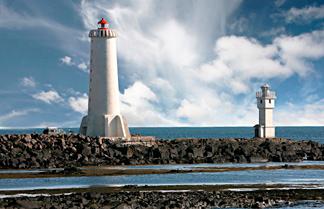
Close to the capital yet away from the bustle, the west of Iceland is a world where culture, nature and history complement each other, creating a unique Icelandic experience. This vast area consists of fjords, valleys, craters, glaciers and volcanoes. Travel through historical Borgarfjörður, home to most of the Icelandic sagas and their heroes, or venture close to the centre of the earth at Snæfellsjökull glacier on the Snæfellsnes Peninsula before crossing over to Dalir, the cradle of the great explorers Eirikur the Red and his son Leifur the Lucky.
The short distances between popular destinations make it possible to enjoy the area at a comfortable pace, so hurry up and slow down in west Iceland.


Useful links
West Iceland information centre www.west.is
Snorrastofa, culture and medieval centre www.snorrastofa.is
Snæfellsjökull National Park www.snafellsjokull.is
The Icelandic Settlement Centre: www.landnamssetur.is
The Agricultural Museum of Iceland: www.landbunadarsafn.is
The Snæfellsnes Travel Association: www.ffsn.is
Official travel guide to Iceland
Promote Iceland
www.visiticeland.com
www.islandsstofa.is/en
www.west.is

Arnarstapi is a truly magical place, like so many places in Snæfellsnes peninsula.
N64° 46’ 12.731“ W23° 37’ 16.028“
Arnarstapi on the southern side of Snæfellsnes peninsula was an important trading post in the past and had a much bigger population than it has now. Columnar basalt, ravines and grottoes surround the Arnarstapi pier. There is good anchorage for small boats.

There is quite a large arctic tern colony in the village itself. A very interesting old path follows the coastline where you can see old lending places of fishermen, lots of birds, like the kittiwake, the Arctic tern and the fulmar and pass through a lavafield. If you take a guided tour, you will also hear a ghost story.
N64° 47’ 46.523“ W22° 19’ 20.593“
Eldborg Crater is a beautifully-formed crater rising 60m above the surrounding lava.
The spatter cone is the largest crater along a short volcanic rift, 200 m in diameter and 50 m deep. Its last eruption was about 5000-6000 years ago. According to medieval
N65° 22’ 25.742“ W22° 55’ 12.295“
The beautifully preserved town on the island of Flatey bears witness to the prosperity and optimism prevalent in the area around 1900. The largest amongst a myriad of islands, it was formerly a centre for commerce in the Breiðafjörður bay; it also had a large fishing dock.

The local church was built in 1926, and the paintings in the dome were created by Kristjana and Baltasar Samper, who sought inspiration in the local culture. Flatey has long been a favourite of both artists and scholars.
The island has a hotel, guesthouse and a restaurant, with daily ferry trips from Stykkishólmur on the Snæfellsnes peninsula and Brjánslækur in the Westfjords.
chronics there was also one around the time of the colonisation of Iceland about 1000 years ago, but today it is known that it came from another of the many craters of the valley Hnappadalur which are part of the volcanic system Ljosufjoll, the mountains of the light.
It is easiest to approach Eldborg from Snorrastaðir on its southern side, walking 2,5 km through the shrub-covered lava field. It is possible to walk all the way around the crater as well as up it.

Krauma is a natural baths to the north of the Deildartunga springs in Borgarfjörður. There are six baths in all, five hot and one cold. ‘We use hot water from the Deildartunga springs, which have the highest flow of springs anywhere in Europe. No additives are put into the water, as the cleanliness is assured simply by the high flow rate,’ said Krauma’s managing director Jónas Friðrik Hjartarson.

The Deildartunga springs produce roughly 180 litres if 100°C water every second which flows through Krauma’s baths, and is tempered with sparkling clean water. ‘When guests have enjoyed a dip in the baths, they can rest in the relaxation room where gentle music is played and a fire can even be lit in the room’s hearth. This has been extremely popular with guests, spending time in a hot or a cold pool or tub, and then going to the relaxation room. This is a fantastic way to relax. ’Guests also have the opportunity for a sauna at Krauma and also a
infrared cell. Spring water sprays under the benches in the sauna.
A magnificent restaurant occupies part of the main building at Krauma, where the emphasis is on fresh local ingredients. ‘In designing the restaurant the focus was on making the most of the surroundings and that the building would integrate into the environment around it,’ Jónas Friðrik said, adding that there has been a a strong demand ever since Krauma opened.
‘Krauma has attracted a lot of attention and we’ve had some fantastic reviews from discerning visitors, not least from overseas. We offer everyone a welcome in the summer, not least Icelandic visitors who intend to spend this year’s holidays at home. Krauma is genuinely an experience for everyone.’


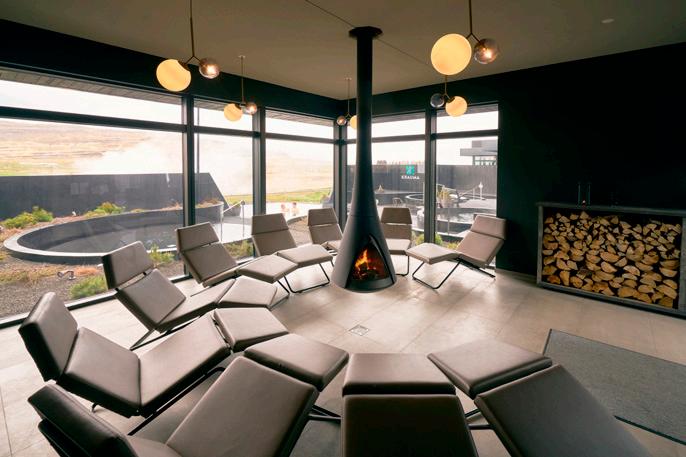 Krauma’s restaurant is a pleasant place and when the weather is fine guests can enjoy meals outside
Krauma’s restaurant is a pleasant place and when the weather is fine guests can enjoy meals outside
N64° 42’ 10.076“ W20° 58’ 39.780“
Hraunfossar - Lava Falls - are beautiful and unusual natural phenomena. Clear, cold springs of subterranean water seep through the lava and run as tiny waterfalls and rapids into the Hvítá River.

Hraunfossar have been protected since 1987. There is a viewpoint at the car park offering an amazing view over the Lava Falls and Hvítá River. Restaurant and souvenir shop open all year round.
The lava and the cave are believed to be aproaximately
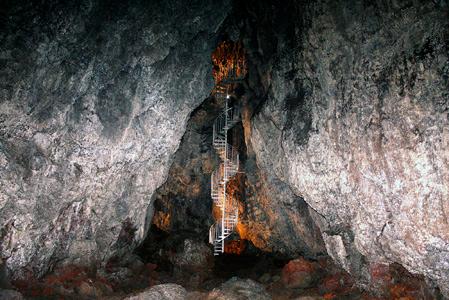
N64° 44’ 56.266“ W23° 48’ 49.244“
The cave Vatnshellir is a 100 m long lava-cave in the south slopes of Purkhólahraun lava flow. A spiral staircase has been put into the cave to enable access but entrance is only allowed with guides from the National Park.

Hvalfjörður (Whale Fjord),only 50 km from Reykjavík, gives an excellent opportunity to enjoy the unique beauty of Icelandic fjords, with its sloops, shores, canyons and
To check availability, find the calendar on www.summitguides.is to see which hours are available on the date you select. We recommend booking online as soon as you have decided you want to go, tours regularly sell out and availability can be limited. Warm clothing is neccessary and gloves recommended. Helmets and headlights are provided. A cave tour takes about 45 minutes.
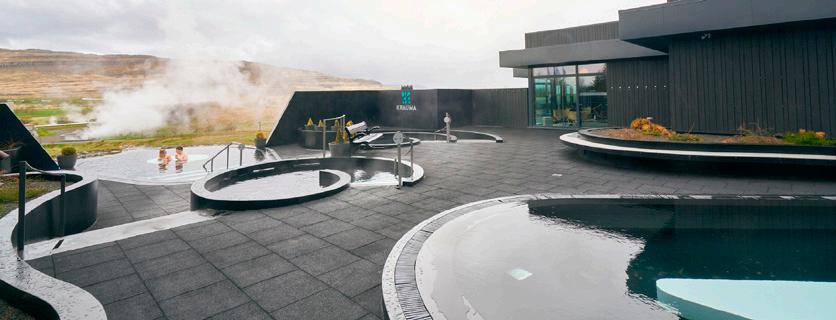
Visiting the Westfjords is surely a different experience. It is Iceland, but yet a different Iceland altogether. Looking like an enormous claw stretching out to sea, the Westfjords are known for sheer sea cliffs, some rising to a height of over 440 metres, and long, narrow fjords. A slender strip of land about 8 km wide connects the southernmost area with the rest of the country.
The northwest tip of the Westfjords is Hornstrandir, a now uninhabited 600-km2 nature reserve of inspired natural beauty and undisturbed wildlife where nature lives in peace with itself. It is truly a privilege to experience such splendour.
Useful links
Official travel guide for the area

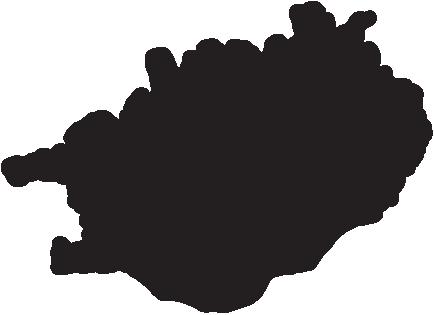
Hólmavík tourist info
The Gisla Saga Project
An exciting water project
Official travel guide to Iceland

Promote Iceland
www.westfjords.is
www.westfjords.is


www.holmavik.is/info
www.westvikings.info
www.vatnavinir.is
www.visiticeland.com
www.islandsstofa.is/en

N65° 56’ 39.954“ W21° 33’ 32.117“
Djúpavík is a sheltered bay in the Strandir district of northwest Iceland. It is a remote region, largely untouched by modern developments where silence reigns and nature continues to shape a rugged, mountainous landscape. Djúpavík leapt to fame in the 1930s when a group of businessmen built a herring factory in the bay.
Djúpavík Hotel is a building that was formerly the living quarters for women working in a herring processing factory that was built in the bay but fell into disuse many years ago.

Bíldudalur offers opportunities for sea fishing.
N65° 41’ 9.256“ W23° 35’ 55.911“
Bíldudalur shouldn’t be missed by anyone visiting the Westfjords. The town stands on the shores of the magnificent Arnarfjörður and is part of the Vesturbyggð municipality. Bíldudalur has plenty to offer those who choose to break their journey there.

The fjord Arnarfjörður is well known for its numerous sea monsters. Tales of such creatures have played a colorful role in Icelandic folk culture for centuries. The Icelandic Sea Monster Museum in
Bíldudalur offers an action-packed multimedia display of such tales, something the whole family can enjoy together.
Bíldudalur offers opportunities for sea fishing, or a trip to Geirþjófsfjörður to visit sites named in the Saga of Gísli. A popular option is to drive out along the coast of the fjord to Selárdalur, where the unique sculptures made by Samúel Jónsson can be seen between the beautiful valleys and the sea. There is also a nine-hole golf course in Bíldudalur, as well as the pool in Reykjafjörður, a short distance from the village, where visitors can relax at any time of the day or night.
The Hornstrandir national park occupies the northern part of the Westfjords peninsula, offering magnificent and unique natural beauty. There are plunging cliff faces along the coast, broken by fjords, valleys and bays. The landscape has been sculpted by the action of the sea and the ice-age glaciers that have left fissures and dales.
The area has exceptionally rich bird life, due largely to the bountiful sea and the plentiful nesting sites. Two of the largest bird cliffs in the country are to be found here. Hælavíkurbjarg is thought to be the largest community of Alcidae in Iceland and Hornbjarg has the

N65° 26’ 33.694“ W22° 38’ 45.754“
Skáleyjar are a group of 160 small islands among the many hundreds of islands in Breiðafjörður bay. They are not far further inland from Flatey, which is the island stopped at by the Baldur ferry.
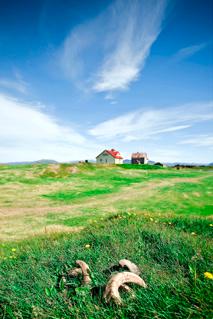
Skáleyjar used to be inhabited – once being home to as many as five farms spread across the islands. Despite the obvious challenges of farming on small islands, the land was considered particularly good and was highly valued centuries ago. It is likely the islands were first inhabited not long after Iceland was settled, but nobody lives there these days.
largest guillemot population. Foxes are protected throughout Hornstrandir and they can be encountered anywhere, as there is plenty of food and shelter for them. They are remarkably unafraid of humans in the national park area and many are used to encountering humans.
Hornstrandir is a true natural paradise and for many travellers it has an aura of adventure to it. One unique factor to the

Hornstrandir region is that there are no road links to it and it is only accessible by sea. There are many paths and tracks leading through the area and there are regular crossings during the summer months. There is also accommodation available at several locations in the national park during the summer.
www.westfjords.is
N65° 30’ 8.760“ W24° 31’ 46.749“
Skáleyjar. Artefacts of past residents are still in evidence – as are eider ducks and many other birds.
Látrabjarg is deservedly the most visited tourist attraction in the Westfjords. This westernmost point of Iceland (and Europe if Greenland and the Azores are not counted) is really a line of several cliffs, 14 kilometres long and up to 441 m high.
Safe from foxes, the birds are fearless, and provide stunning photographic opportunities from close range. Bird photography for dummies, you might say. The puffins are particularly tame and are the ones frequenting the grassy, higher part of the cliffs.
Ísafjörður is the largest town in the Westfjords peninsula, with some 2600 inhabitants. The growth of the town was triggered by salt fish production, and ever since then the fishing industry has been vital for the community. Other industries, such as tourism and the service sector have grown in recent years and decades.
For the tourist, Ísafjörður has a range of accommodation, restaurants and recreation

for all budgets and tastes. A golf course, hiking- and biking trails, horse riding, bird watching, skiing and kayaking are all within an easy reach.
It is easy to reach Ísafjörður either by car, by bus or by using the two daily flights from Reykjavík. Ferries to Hornstrandir Nature Reserve depart from Ísafjörður daily during



The north of Iceland is a true natural paradise, offering a multitude of adventurous activities, attracting people of all ages. From the country’s largest geothermal fields to beautiful islands exuding folklore and one of Iceland’s most popular skiing resorts, the north of Iceland offers a myriad of possibilities for outdoor recreation.
Akureyri is the centre of culture, education and leisure activities in north Iceland. The town is by far the largest outside the Reykjavík capital area. We also recommend going on organized excursions or outdoor activity tours taking you from town to town, out to the islands or into the highlands – allowing you the chance to see the magnificent landscape the north has to offer. Nearly every area has an outdoor swimming pool, and facilities for tourists are top-notch.
Useful links
Official travel guide for the area
Akureyri tourist guide

Akureyri Art Museum
Hof Cultural and Concert Centre
Whale Museum in Húsavík
Akureyri Museum
Grímsey island
www.northiceland.is
www.northiceland.is
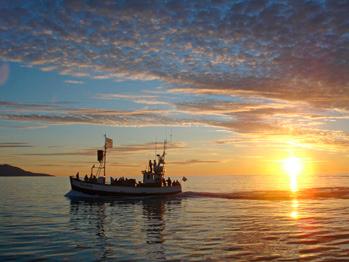
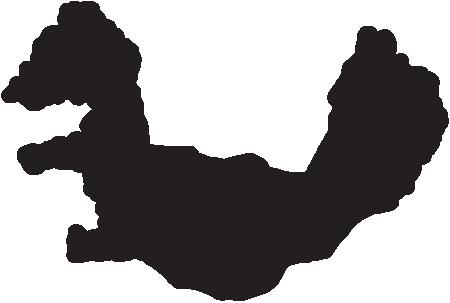
www.visitakureyri.is

www.listasafn.akureyri.is
www.mak.is/en
www.whalemuseum.is
www.akmus.is
www.grimsey.is
Hrísey island www.hrisey.is
Official travel guide to Iceland
Promote Iceland
www.visiticeland.com
www.islandsstofa.is/en









Hrísey is the gem of Eyjafjörður and it has a flourishing community, magnificent panoramic views of the fjord and a rich birdlife. Sailing to the island with the ferry Sævar only takes about 15 minutes. Departure is from the small harbour at the community Árskógssandur (35 km from Akureyri).



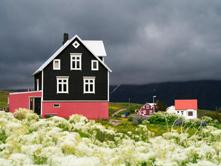

Hrísey has plenty to see and do. There is a shop and a restaurant, a chance to go for a swim, or a visit to the house of SharkJörundur which is home to a fascinating museum dedicated to the shark fishery off the coast of Iceland in years gone by. The history of the islands is also presented in a series of displays with both text and pictures. The museum is open every day through the summer.
The island has a variety of delightful walking routes and the eastern shore of Hrísey is said to offer some of the most magnificent and inspiring views to be found in Iceland. Peace and tranquillity flow across the fjord from Kaldbakur, the mountain that watches over the eastern side of Eyjafjörður. The route is marked with signs for visitors.



The tunnel bypasses the precipitous Víkurskarð Mountain Road, a hazard for drivers in bad weather.

Vaðlaheiði tunnel is a 7.5 km (4.7 miles) on the Icelandic Ring Road, close to the town of Akureyri, the capital of North Iceland. The tunnel bypasses the precipitous Víkurskarð Mountain Road, a hazard for drivers in bad weather. The tunnel shortens the Ring Road by approximately 16 km (10 miles), saving drivers up to 12 minutes in good weather conditions.
Drivers need to pay road toll when driving through the Vadlaheidi tunnel, but they should pay attention to there are no toll booths or pay machines around. Instead travellers pay for a single trip by visiting the website www.tunnel.is and pay for each single trip via card. To avoid an extra charges from the Car Rental travellers can pay for each trip through the tunnel 24 hours
before entering the tunnel or max 24 hours after driving through the tunnel.
All further information on www.tunnel.is
Blönduós has a great swimmingpool for everyone, especially families with children. The swimming pool is 25 x 8.5 meters and the pool area also has two hot tubs, steam bath, waddle pool for children, ice bath, two large water slides and a lot of toys.
Natural resources are used in the swimming pool. Chlorine is produced on site and table salt is the only ingredient needed in the production as well as electricity and water. Chlorine gas is produced and put directly into the disinfection system as well as the system produces chlorine water used to meet daily fluctuations in usage. The device is the first of its kind in Iceland. The main advantages of the new system are: No transfers between locations of hazardous substances, chlorine odour is reduced, redness in eyes and skin irritation is reduced, Eco-friendly for the staff and promotes Eco-friendly environment.
Blönduós has a fine swimming pool, with slides, a paddling pool and hot tubs
The Blönduós swimming pool is open in summer Mondays to Fridays 08:00-21:00 and Saturdays and Sundays 10:00-20:00.

For those who want first hand experience with nature, the municipality of Dalvikurbyggd is the perfect choice. There you will find a well equipped swimming pool, folk museum Hvoll, skiing facilities, golf course, sea angling, whale watching, horseback riding and our truly unique Beer baths, the only ones of their kind in Iceland. It is ideal to visit Dalvik to experience the stillness, safety and the spectacular view we have to offer.
We would like to direct visitors towards our information point which is placed in Berg cultural house in Dalvik. There they have varied information available whether you are seeking relaxation or travel oppurtunities in the municipality Dalvíkurbyggð.
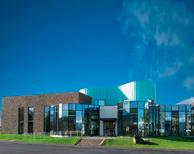



As in previous years, the Fish Festival on the 12th of August and the programme around it in the week leading up to the festival Saturday is the high point of the summer in Dalvíkurbyggð. On the Great Fish Day guests are invited to a sea food buffet between 1 11:00-17:00 at the harbour in Dalvík.

N65° 58’ 29.454“ W18° 29’ 54.680“
Dalvik’s closest environment comprimises the Svarfaðardalur Nature Reserve is an
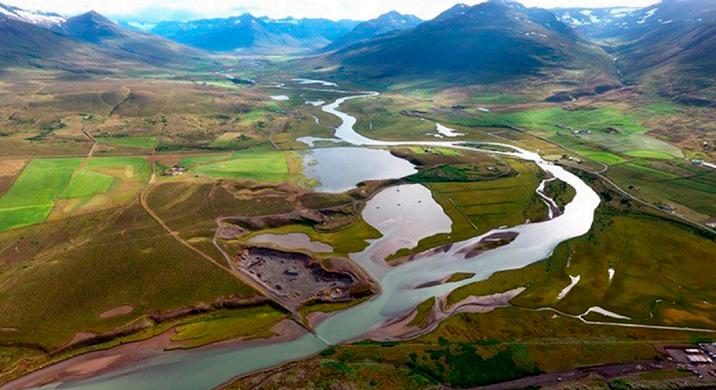
area of about 8 square km of wetland. Within the reserve are dry river-banks as well as marshes with sedge bogs, ditches and fertile ponds with reeds. This natural
In the oldest house on the Island a museum has been set up where you learn about the history of shark fishing in Iceland and the settlement in Hrísey.

It also houses the Tourist information which is open 1pm to 5 pm from the start of June until the end of August.
environment provides an excellent habitat for many species of breeding birds.
Here the birdwatcher can easily observe an unusually large variety of bird species in a small area – mainly waterfowl and waders, but also passerines and gulls. Around 30-40 bird species breed in the Nature Reserve, and others pass through. The lower birdwatching area close to Dalvík comprises wetland from the sea and along the Svarfaðardalsá river below road 82.
Thearea of Hrísahöfði
headland andHrísatjörn
pond abounds in birdlife and provides good conditions for birdwatchers.
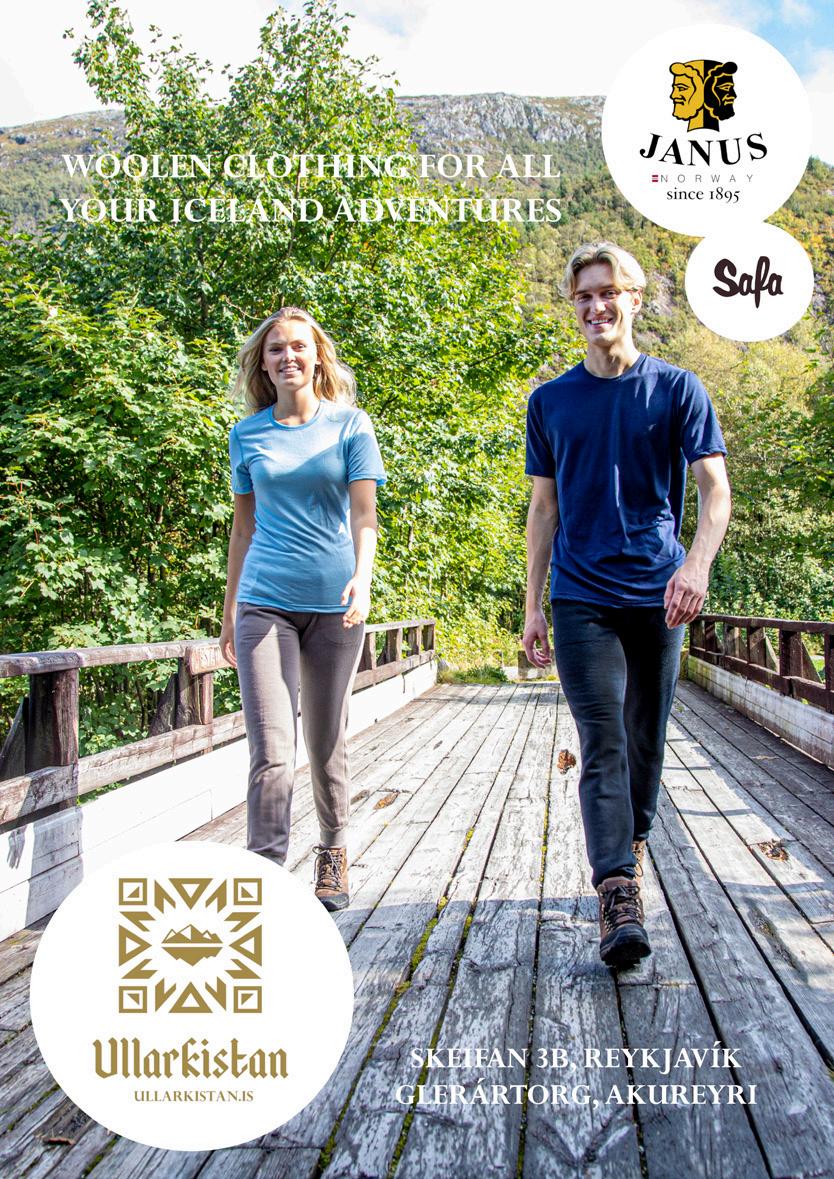
If you are interested in local history you should visit Akureyri Museum and affiliated museums. With one ticket you get access to Akureyri Museum, Nonni‘s house, Akureyri Toy Museum, Davíðs house and Laufás Heritage site and museum. You also get a discount to Sverrir Hermannsson’s Sundry Collection in Eyjafjarðarsveit.

In the oldest part of Akureyri you find Nonni’s house, the Museumchurch and Akureyri Toy Museum and Akureyri Museum. Which has modern exhibitions about the history of the town and the only cartographic exhibition in Iceland of antique maps of Iceland with the Schulte collection. Nonni‘s house is one of Akureyri’s oldest buildings, built in the 1840’s. Although it is a small house it contains a large story. Nonni left Akureyri as a 12 year old boy to become a Jesuit a famous writer.
Akureyri Toy Museum is a charmingly small, dollhouse-like full of past and present toys.

Davids house is the home of Iceland’s most beloved poet. It is both a home and an artmuseum with everything intact from 1964. Guided tours from Tuesday to Saturday at 13,14 and 15.
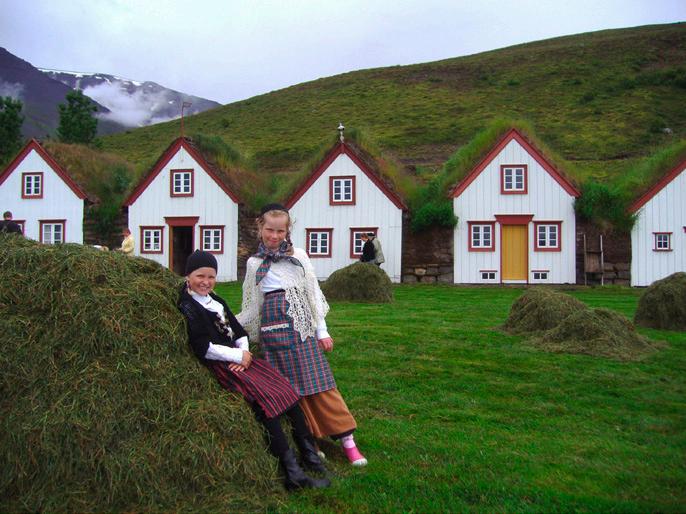
Laufás is part of the National Museums
Historic Buildings Collection. It is located in a picturesque part of Eyjafjörður. Take the route 83 towards Grenivík.
All the museums have activities for families, complementary coffee at Laufás and Akureyri Museum. Pick up the Family Museum-passport and start your journey. With one ticket you get access to all the museums, valid throughout the year, free for children.
FJALLABYGGÐ IS AN AREA OF SPECTACULAR NATURAL BEAUTY


THE CL OSENESS TO NATURE IS ALWAYS WITHIN REACH
FLOURI SHING CULTURAL LIFE, MUSEUMS, GALLERIES & MORE
FJALLABYGGD.IS

N65° 45’ 8.500“ W19° 39’ 5.540“
The exhibition, 1238: The Battle of Iceland, at Aðalgata 21 at Sauðárkrókur revolves around the most famous part of the Icelandic Sagas - Sturlung Era (1220 - 1264); the bloodiest and most violent era in Icelandic history. Sturlunga is recreated with interactive technology and brings to life, in a fascinating vision, Iceland’s most dramatic clash of family clans and the fatal civil war that ended Iceland’s independence.

1238:The Battle of Iceland, is an immersive exhibition that goes a step beyond the regular history museum. The exhibition offers people of all ages to experience history in a very modern and artful interactive installations and to take part in dramatic events through virtual reality. Whether visitors have great or no interest in history the visit is truly an amazing experience.


Café & Bistro, Souvenir Shop and Tourist Information Office is also located at 1238: The Battle of Iceland.
Open daily in summertime: 10am to 5pm
www.1238.is
N65° 58’ 19.574“ W18° 31’ 56.759“
Cultural house Berg is in the town centre of Dalvík. The Public Library is located there and a Coffie House. Art performances, concerts, conferences and cultural tourism


also have their place in the house and a multi-purpose hall is availble. Various events are scheduled all year round.
Open Monday to Friday from 10:00 to 17:00, Saturdays from 13:00 to 16:00. The library is
open 10:00 to 17:00 (Monday-Friday) and 13:00 to 16:00 on Saturdays. Closed on Sundays.
www.dalvikurbyggd.is/berg
Unique cars and vehicles – worth visiting!




Opening hours:*
Daily 11:00-18:00
*until end of september
Price: 1.200 kr. pr. adult
Free for 12 year and younger
N66° 33’ 53.942“ W18° 1’ 6.371“
Grímsey island is the only substantial part of Iceland that lies partly within the Arctic Circle. The island is a notable tourist destination for being the northernmost place in Iceland, it is only two square miles in size and has a population of less than 100 people. Although inhabitants are few, they heartily welcome visitors throughout the year.
The Arctic Circle is a line close to the 66,5° parallels in the Northern and Southern hemispheres. It marks the approximate area where the sun never rises in winter and never sets in summer. There is no better place to enjoy the unique midnight sun and during the summer solstice the sun remains above the horizon around the clock and the islanders have a special festival to celebrate. ORBIS et GLOBUS (Circle & Sphere) is an artwork, a 17,600-pound concrete sphere, that was placed on the Arctic Circle in 2017. It is a 3m diameter globe that will follow the fluctuating North-South path of the Arctic Circle until it leaves the island.
www.grimsey.is


all year
One ticket for 5 museums
Only 2.300 ISK Children free - valid all year







Skagafjörður is truly a land of adventure for all. Offering a wide variety of activities set in beautiful surroundings. Whether you wish to go white water rafting down foaming glacial rivers; play golf at a scenic golf course; helicopter skiing on the Tröllaskagi mountain range; horse riding in an amazing and unique landscape; sailing to the majestic island of Drangey; relax in a natural hot spring; enjoy the magic of the northern lights in the winter stillness; indulge in excellent food prepared from local produce; visit a petting zoo… Or just lay back and relax and enjoy the stay – there are diverse accommodation options available for you to choose from.
Tourist information in Vamahlíð and Sauðákrókur is open year-round.

There you can obtain maps, brochures, and information about Skagafjörður.
Free access to the internet
Tel: Varmahlíð +354 455 6161
Tel: Sauðárkrókur +354 588 1238 info@visitskagafjordur.is www.visitskagafjordur.is
Skagafjörður has a rich cultural heritage and an abundance of historical sites. The Skagafjörður Heritage Museum engages in exhibitions, conservation, and research. The museum in the old turf farmhouse at Glaumbær has for over halfa a century been showing visitors what 18th and 19th century life was like in rural Iceland. There are numerous other institutions, exhibits, and activities which are interesting to see and do: Víðimýrarkirkja turf church near the village of Varmahlíð, the Old Stable in Lýtingsstaðir, The Icelandic Emigration Center in Hofsós, take a dip in Hofsós scenic swimming pool, The Vintage Auto Museum at Stóragerði, The historical bishop’s seat of Hólar in Hjaltadalur Valley, The Icelandic Horse History Center in Hólar, the history and art exhibition Kakalaskáli at Kringlumýri, or the virtual exhibitions 1238 – The Battle of Iceland in Sauðárkrókur.
Skagafjörður’s unique interplay of nature, history and culture makes it an exciting destination, offering a wide variety of experiences for your holiday. The heritage of stories occurring locally, such as the Saga of Grettir the Strong, the Saga of the Sturlungas and numerous folktales, in addition to the many cultural relics, will make your vacation fascinating and memorable.
visitskagafjordur.is





Herring was one of the greatest forces for change in Iceland during the 20th century and laid the basis for Icelanders to be able to rise up from their longstanding poverty and build a modern society. Events concerning the herring fishery were so pivotal for the country and its people that this is referred to as an adventure – the Herring Adventure.
Herring towns of every size appeared around every port across the north and east of Iceland, and Siglufjörður was the largest and the best known of these. The Herring Era Museum in Siglufjörður is one of Iceland’s largest museums and it contains a unique collection
N66° 3’ 8.834“ W17° 21’ 40.745“
The GeoSea sea baths at Húsavík enable you to enjoy nature in a unique manner. Thanks to the underground heat, the seawater in the baths is warm and comfortable and the mineral-rich water will caress your skin.
The water in the GeoSea sea baths comes from two drill-holes. There is no need to use any cleaning agents or equipment, as the steady
devoted to the herring fishery and the processing of the Silver of the Sea. Róaldsbrakki is a Norwegian herring shed dating from 1907. This is much as it was during the years of the Herring Adventure when herring workers lived there. Grána contains a collection related


flow of water from the drill-holes, between the pools, over their edges and into the sea ensures that the water stays within the limits stipulated by health regulations. Those suffering from skin conditions such as psoriasis have found relief by bathing in the water, which is at an optimal temperature of 38°-39°C.
In addition to GeoSea, you can find a public swimming pool in central Húsavík, in Heiðarbær camping site, 20km south of Húsavík and as well the swimming pool Lundur 70km northeast of Húsavík.


By using the green energy electric boats for whale watching North Sailing adds a new dimension to the way their guests experience nature.
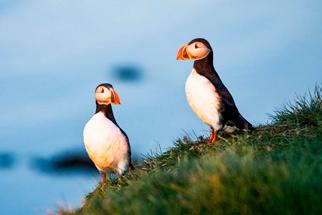





North Sailing is an eco-friendly and sustainable whale watching company that is highly respectful of nature and wildlife. Their Original Whale Watching tour has built a reputation for the town of Húsavík as the Whale Capital of Iceland.
Whales and puffins
Discover the magnificent nature of Skjálfandi bay where you can see whales, dolphins and sea birds in their natural habitat. North
Sailing’s crew is both professional and highly qualified and will take you along on a smooth sailing in a traditional Icelandic oak boat to explore the home of the whales. In addition to seeing whales in their natural habitat, you get to see the colourful and iconic puffins nesting, flying around and diving for food!
Eco friendly whale watching
Andvari and Ópal, North Sailing's innovative electric boats, are silent and among the most
animal and environmentally friendly whale watching vessels in the world. Gliding silently alongside the whales on an electric boat offers a tranquil whale watching experience that is unparalleled: You will have a chance to quietly watch the whales, causing them minimal disturbance. An unforgettable experience!
There aren’t many places that equal Akureyri in being popular as a place to visit, at any time of the summer or winter. The town has a bustling community, a colourful cultural scene, a variety of museums, one of the finest swimming pools in the country, all kinds of events taking place and restaurants to suit every taste, and much, much more. On top of that, this is a place where the weather is kind, there’s some magnificent nature on every corner and endless opportunities to enjoy the outdoors!
To make it easier for visitors to keep track of events in and around Akureyri, the www.visitakureyri.com website lists information for all
of the events taking place in the town, opportunities for relaxation and services, all in one place.
We pay special attention to events listed for the Bank Holiday weekend in August and for the Akureyri Town Festival weekend at the end of the same month. The trail running event Súlur Vertical takes place in Akureyri, August 4th and 5th this summer and the centre of town is the ideal place to see this year’s runners as the hit the finishing line.

Akureyri has a lot to offer!
Below we list some attractions and activities that we recommend for our guests while in Akureyri.
» The Botanical Garden – most of the Icelandic flora as well as about 7000 foreign plants

» The Art Museum and Art Street (Kaupvangsstræti)
» Sundlaug Akureyrar – outdoor geothermal swimming pool, 3 pools, hut tubs, play areas and waterslides
» Whale watching from the pier below center of town
» Restaurants – promoting local food
» Kjarnaskógur – wood, trails and playgrounds
» The old town – old houses and several museums
» Golf course – The northern most 18-hole golf course and the competition “Arctic Open”
» Glerárgil – canyon and trails
» Hrísey island, the charming village and hiking trails (30 min drive and 15 min ferry sailing)
» Akureyri Town Festival – end of August each year

 The ultra trail run Súlur Vertical takes participants from the highest peaks around Akureyri down to the central heart of town.
Akureyri town centre.
The ultra trail run Súlur Vertical takes participants from the highest peaks around Akureyri down to the central heart of town.
Akureyri town centre.
The municipality Fjallabyggð in North Iceland has a backdrop of natural beauty bringing together magnificent mountains and fjords. The proximity to nature is always at hand, whether you’re looking for a walk, a round of golf, a swim in the sea, windsurfing, kayaking or a trip on a jetski, or would simply prefer to relax in one of the quiet communities.This most northerly community in Iceland is one of the finest places to take in the midnight sun at its best.
The Fjallabyggð region is home to a thriving cultural scene. There are many restaurants and plenty of accommodation options. Museums include the Herring Era Museum in Siglufjörður, Ólafsfjörður’s Pálshús which is home to a unique natural history collection, the reverend Bjarni Thorsteins-



excitement of the beaches, horse riding, or fishing from the town’s quays. Our woodlands are a natural delight that offer orienteering challenges, greta places to barbecue and so much that makes time with
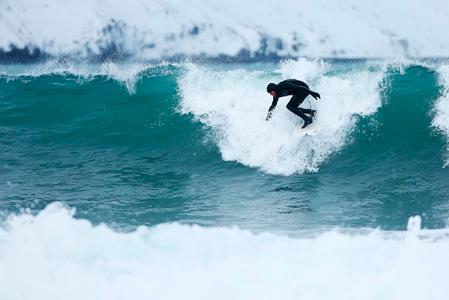
open-air), with hot pools, hot tubs where you
Welcome to Fjallabyggð!
www.fjallabyggd.is
www.visittrollaskagi.is



“We are very excited for the next two years, as construction work on new facilities is about to start. Our goal is to raise the service level in all possible ways, so we can excel our guest’s experience. We are looking very much forward to welcoming you in a brand new house in 2024”, says Ragnhildur Hólm Sigurðardóttir, marketing manager at Mývatn Nature Baths.
Mývatn Nature Baths are open every day, all year round, except for January 1st. Anyone who wants to relax in the lagoon is welcome, and in addition to the lagoon there is a hot tub with water temperature around 41°C and the unique steam baths, with natural steam rising directly from a geothermal crack in the ground. Just over two years ago, a swim-up bar in the lagoon was opened and it is definitely the hottest bar in Mývatn area.
The water temperature of the lagoon is normally 36-40°C. The water in the lagoon contains high levels of minerals, is alkaline and highly suitable for a dip. It is considered to have good effects on skin problems, such as eczema and psoriasis because of the trace elements in the water. Due to its chemical composition, undesired bacteria and vegetation do not thrive in the lagoon making chloride or any other disinfectant redundant. After a refreshing bath, visitors can relax at Café Kvika and have a light meal while enjoying the spectacular views of Mývatn area.

Mývatn Nature Baths started using a booking system three years ago so now anyone can book at the website, www.naturebaths.is. Ragnhildur recommends to pre-book to make sure to get available entrance tickets. “In the past years, well – before Covid, we saw it happen multiple times that visitors arrived and we were sold out. We needed to act on it, therefore we started using the booking system and the results are great! We are no longer overcrowded with queues all the way to the parking lot. That makes everyone happier, both our visitors and our staff members.”

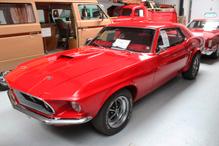
The Transportation Museum at Ystafell is located by route 85, 37km south from Húsavík, in North Iceland. Ystafell is the oldest car museum in Iceland and has one of the largest collections of cars, trucks and other vehicles in the country, many of them exremely rare and historic.
The Transportation Musemum at Ystafell was established in 1998, opened in July 2000 and there you will find over 100 vehicles of all kind. Both original cars and beautifully rebuilded cars. Rare passenger cars, jeeps, cars from the war years in Iceland, tractors, snowmobiles, tanks, work


machines, trucks, motorcycles and so on. Plenty of of antique treasures of the motorworld to discover!

N65° 36’ 25.656“
W20° 37’ 32.617“
Hvítserkur is a 15 m-high sea stack just off shore on the eastern side of the Vatnsnes Peninsula and rises up from the sea in Húnaflói Bay in north-west Iceland.

Hvítserkur roughly translates into „White Shirt“ and the name comes from being covered in bird droppings.
Legend has it, that the cliff was once a troll that intended to destroy the church at
Opening hours is daily at 11:00-18:00. Please visit our website and Facebook for further information.
www.ystafell.is
wintertime, you need to check out what the road conditions are like and which roads are closed.
The Icelandic Road and Coastal Administration (IRCA) provides regular information on both road conditions and the weather on the web-site, www.trafficinfo.is, where you will find an interactive map of Iceland in English.
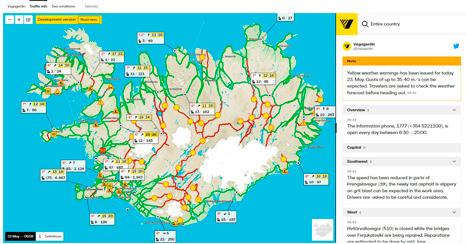

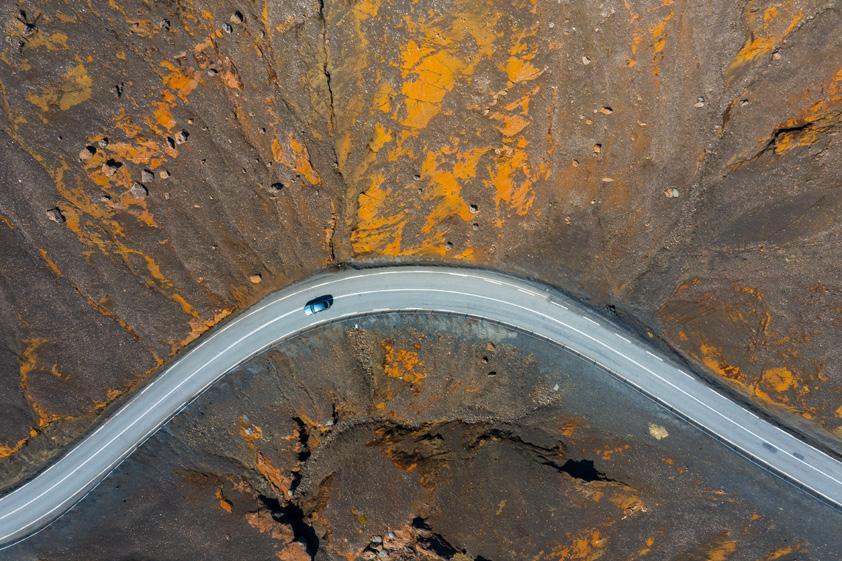
The map gives information on what state the roads are in; whether they are clear, slippery, snowed under, or even closed. Automatic weather stations with traffic counters are located in various areas, providing up-to-date information on conditions in each place, temperature and wind speed, as well as how many cars have passed through the road in the last 10 minutes and from midnight.
On trafficinfo.is you will also find over 200 live cameras, where you can see for yourself what the conditions are. You can also find information on Twitter (Vegagerðin | Iceland Roads).
on 1777, which also gives information on conditions and weather.
The phone service is open from 6:30 am to 10:00 pm during the wintertime, and from 06:30 am to 8:00 pm in the summer.





The east of Iceland – a magical region of natural phenomena. Glaciers, forests, bird cliffs, vast expanses, deserts, majestic mountains and narrow fjords. Waterfalls, rivers and the sea. The east of Iceland is a gem of natural wonders and history. It is a region rich in relics from times long past, vestiges of work methods, culture and life’s eternal struggle. It is home to around 16,000 people, who enjoy the relatively still weather of the fjords that makes the water an ideal reflector of the surrounding mountain landscapes.
Villages of varying sizes dot the fjords. Loðmundarfjörður Fjord is ideal for travellers interested in walking peacefully where no one lives.
Fog is common in the stillness of east Iceland’s fjords, and the name “east Iceland fog” has become part of the weather terminology.
Useful links Official








Fjarðabyggð has to offer. Equally memorable to those who visit are the communities and the culture of the seaside villages, each with its own spirit and character nestling along Iceland’s easternmost coast. Every year, the Fjarðabyggð combination of landscape, history and easy going attitude towards life attracts more visitors.
Fjarðabyggð’s six camping areas. You’ll also find plenty of choices for recreation, in a municipality where both mountain slopes and seashores lie just beyond your doorstep.
No matter where else you’re heading in East Iceland, Fjarðabyggð will be worth every minute you spend here. Check out our wide range of services and recreation for travellers and come enjoy the wonders of East Iceland, at all times of the year!
www.visitfjardabyggd.is





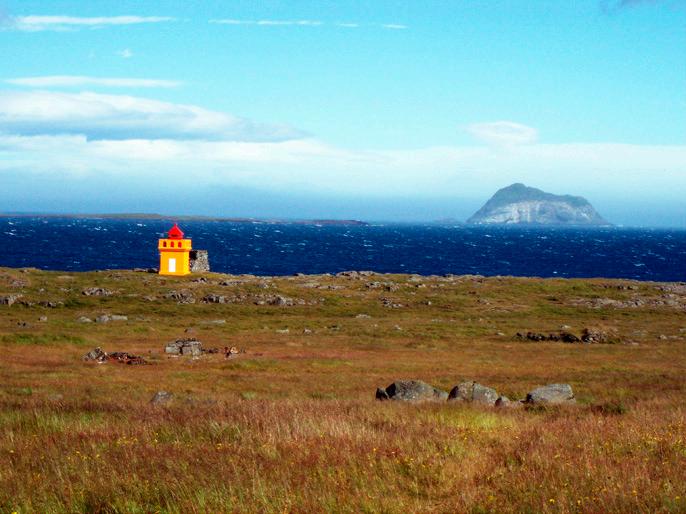
N64° 39’ 44.773“ W14° 17’ 40.095“
Eggin í Gleðivík (the eggs at Merry Bay) is an outdoor artwork by artist Sigurður Guð-
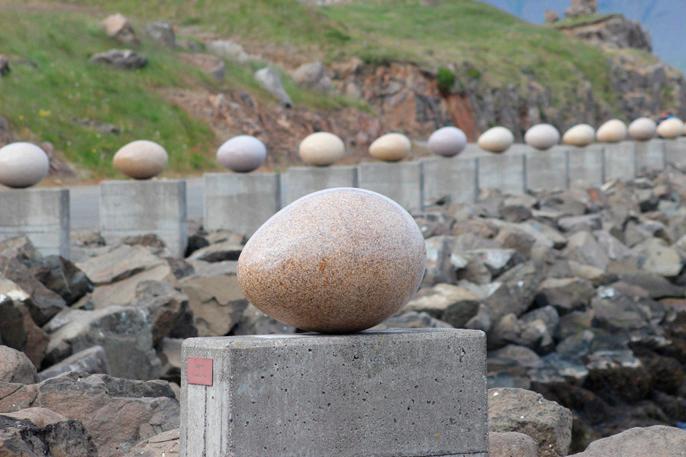
mundsson (b. 1942). The artwork has 34 replicas of eggs of nesting birds that nest in the vicinity of Djúpivogur and reflects the strong connection that Djúpivogur has with
N65° 31’ 31.362“ W13° 48’ 33.014“
Borgarfjörður Eystri is known for its unique beauty and rich history. Lindarbakki, a small, beautiful turf house, has captivated many visitors with its picturesque look. A must see when visiting the village. The house is typical of its time, originally built in 1899 but parts have been rebuilt since.
Borgarfjordur eystri is a fjord with a population of around 130 people, located in East Iceland. Its main settlement is

Bakkagerdi. The area is renowned for its natural beauty. Sheep farming, fishing and fish work is the Bakkagerdi’s main economy, as well as tourism, though this is only during the summer months.
nature. The work is especially for the site. The eggs stand on concrete pillars that previously supported a landing pipe between the pier and the smelter.
Borgarfjörður eystri is one of the safest places in Iceland to see puffins. Boardwalks and viewing platforms have been erected so that you can get up close to the puffins without damaging their burrows. It is estimated that 10,000 pairs of puffins nest here from mid-April through mid-August.

The Church in Seyðisfjörður is one of the most recognisable landmarks in Iceland.
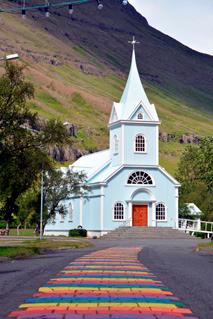
Seyðisfjörður is regarded by many as one of Iceland’s most picturesque towns, not only due to its impressive environment, but also because nowhere in Iceland has a community of old wooden buildings been preserved so well as here. The local economy has long been based on the fisheries, while light industry also flourishes. Tourism is playing a growing role, as the picturesque town in its spectacular surroundings attracts more and more visitors.
Museums and festivals
Tourism in Seyðisfjörður has developed with a focus on history, arts and culture. Skaftfell – Center for Visual art, is dedicated to nurturing
and exhibiting visual art, the main emphasis being on contemporary art. Variety of art and culture events do take place in town each summer; LungA festival for young people and Blue Church concert series.
The car/passenger ferry Norrøna, which plies between continental Europe and Iceland every summer, docks at Seyðisfjörður every Thursday. Seyðisfjörður has been a cosmopolitan community from its foundation, and the ferry service has contributed to ensuring that it remains so. www.visitseydisfjordur.com
N65° 2’ 29.182“ W14° 57’ 8.205“
Skriðuklaustur is an ancient manor and magistrate’s residence in Fljótsdalur. There was a monastery at Skriðuklaustur from
1493-1552. The ruins of the monastery have been excavated, and the excavation revealed that medicine and bookmaking were practiced there. Various remarkable objects were also found in the excavation.
In 1939, the author Gunnar Gunnarsson settled in Skriðuklaustur and built a unique mansion. Gunnar gave the estate to the Icelandic state when he moved to Reykjavík in 1948. An agricultural experimental station was run at Skriðuklaustur for a long time, but in the year 2000, Gunnarsstofnun opened there. Today Skriðuklaustur is run as a cultural and educational center. During the summer, various exhibitions are available, and guests can receive personal guided tours of the poet’s house. There is also a great café called Klausturkaffi.

Opening hours
• April - May: 11am - 5pm
• June - August: 10am - 6pm
• September - October 15th: 11am - 5pm
• Winter: opening hours irregular, check for information
The South of Iceland is unique and that part of the country which by far the greatest numbers of foreign visitors come to. Here history follows you at every footstep, there is creative art, culture and flourishing trade and endless possibilities to enjoy the outdoor life in all seasons. Above all there is the awesome and rugged nature from the mountains to the sea.
The south of Iceland is a nature traveller´s daydream, a sampling of all that is Icelandic, including some of the country´s most treasured natural attractions. Many are not far from the capital while others are more adventurously located, requiring 4-wheel-drive vehicles and a map of the southern highlands. Or hiking boots.

Useful links
Official travel guide for the area www.south.is

Tourist information www.southiceland.is
Þingvellir national park www.thingvellir.is
Þórsmörk area www.thorsmork.is
Geysir

Landmannalaugar highland

www.geysircenter.is

www.landmannalaugar.info
Official travel guide to Iceland www.visiticeland.com


Promote Iceland
www.islandsstofa.is/en
www.south.is
N63° 29’ 26.621“ W19° 21’ 48.072“
Sólheimasandur on South Iceland is a sand desert formed by jökulhlaup, or glacial outburst floods, from the Katla volcano system that lies underneath the Mýrdalsjökull glacier.
In 1973 a DC-3 US Navy plane ran out of fuel and landed on the beach of Sólheimasandur between Skógafoss and Dyrhólaey. Everyone

survived the landing. The plane wreck is still there and has become a popular site, specially when pictures of the Canadian pop star Justin Bieber, skateboarding on the roof of the plane wreckage, went viral around the world.
Driving to the plane wreck is forbidden, but by the main road #1, there is a good parking place, and relatively easy to walk from there to the site. The walk each way takes about an hour.

N63° 31’ 49.051“ W18° 53’ 17.848“
Þakgil campsite is located in a beautiful valley, surrounded by mountains, 20 km from Vík by road 214. These conditions make the weather in Þakgil very mild and calm, and a lovely little freshwater stream trickles though the camping site. Hiking routes to interesting places of variable difficulty are all around, including to the Mýrdalsjökull Glacier.
Getting to Þakgil is also part of the adventure itself. You will see all manner of weird and wonderful rock formations, scenic panoramic views that go on forever and even the remains of no less than two movie sets, parts of the television show Game of Thrones were filmed here. The gravel road is well maintained and an average passenger car can make it all the way to the campsite in about 30 minutes.
N64° 3’ 46.544” W18° 14’ 42.155”
Lakagígar lies inside the Vatnajökull National Park and is formed of a series of fissures that appeared during an eruption over a 25 kilometre wide area 250 years ago, which was the largest eruption in Iceland’s history. The fissures are protected as a


natural wonder and are considered to be unique.
The area is staffed by wardens during the summer, who provide information to visitors and give guidance on pathways. Their information is invaluable to get the most of a visit. The district is open to travellers all
N64° 13’ 12.741” W20° 43’ 47.541”
The Laugarvatn caves are located on the Golden Circle route near Laugarvatn and have been returned to the condition they would have been in between 1910 and 1922. There are guided tours available through the caves, bringing to life the lives of the inhabitants, as well as which souvenirs and refreshments will be available.
With no farm available anywhere in Laugardalur, a young couple moved into the caves in 1910 and lived there for a year. In 1918 another couple moved in and lived

year round, depending on snow levels and how long roads can be kept open in winter. Normally the roads are open by the beginning of June and remain open until autumn. Driving off-road is strictly prohibited, as is the case in other parts of the country.
there until 1922, during which time they had three children.
www.thecavepeople.is
is a protected area, regarded as being unique.
Skálholt is one of the most remarkable historical sites in Iceland and an exceptionally peaceful spot, as well as being the location of one of the country’s most ancient churches. The present church was designed by arcitect Hörður Bjarnason and was consecrated in 1963. This is a magnificently airy building in every way.
During the construction, the decision was taken to fit stained glass windows and following a competition in the spring of 1958, the task went to sculptor Gerður Helgadóttir (1928-1975). Her stained glass work can be seen in five churches in Iceland and several more in other countries. The Skálholt cathedral also houses more unique works of art, including a mosaic by Nína Tryggvadóttir.








The population of Heimaey island is 4.500 people
Around 30 types of bird nests are in Westman Islands
Surtsey is the youngest island in the world, from 1963
Eldfell mountain is the youngest volcano in the world, from 1973
When pirates invaded the island in 1627 around 230 people was kidnapped and sent into slavery
The highest mountain in Westman Islands, Heimaklettur is 283m high
Fishing is the main occupation on Westman Islands
Restaurants in the Westman Islands are some of the best in the country
Westman Islands is the largest puffin colony in the world
About 400 houses was destroyed in the volcano eruption year 1973
The Westman Islands have about 30 ships and boats
The Westman Islands have often been referred to as The Pompeii of the North
variety of unique vegetation. In times past, the farmers of Fljótshlíð and the area under Eyjafjall pastured their sheep all year round due to the mild climate found within þórsmörk.
Since the 1918 eruption of Katla, Þórsmörk was designated as a Natural Mountain Reserve. There are many curious natural rock formations in the area, such as Snorraríki, Sóttarhellar Cave, Álfakirkja (The Church of the Elves), Stakkholtsgjá Gorge, and the stone arch in Stóra Enda.
N63° 40’ 37.930“ W19° 28’ 53.009“
Þórsmörk (Thórsmörk) is a natural gem that sits between Mýrdalsjökull to the east, the

river Krossá in the south, with Markárfljót and Þröngá Rivers to the north. Its diverse landscape is characterized by impressive gorges, ravines, scrubby slopes, and a wide
Only large jeeps and buses can navigate the road into Þórsmörk due to the ever-changing volume of water, which can turn small and easily passable tributaries into tumultuous rivers in a matter of hours.
N64° 14’ 49.058” W21° 7’ 28.372”
The history of of Iceland has nowhere more visible than at Þingvellir on the Öxará river. Iceland’s Parliament, the Althing, was established here in year 930 and it was the scene of many momentous events in the

country’s history. It’s safe to say that Þingvellir is the place that hold a special position in the Icelandic psyche.

The laws governing the Þingvellir national park state that Þingvellir on the Öxará river should remain a protected area for all

Opening hours
Icelanders. Large uninhabited areas of the national park have been set aside and people are prohibited from settling there or exploiting the area in any other way than simply walking through it and enjoying their surroundings. Þingvellir is a UNESCO world heritage site.
N63° 24’ 10.512“ W19° 2’ 36.422“
Reynisdrangar are basalt sea stacks situated under the mountain Reynisfjall near the village Vík í Mýrdal, southern Iceland which is framed by a black sand beach that

was ranked in 1991 as one of the ten most beautiful non-tropical beaches in the world.
On Reynisfjöru beach, very beautiful basalt formations in the south part of the mountain can be seen, and there you will find an
exceedingly beautiful cave called Hálsanefshellir. Please keep in mind that although Reynisfjara black sand beach shares it stunning beauty, visitors must be aware of the sea currents and sneaker waves at Reynisfjara beach.
The Skógar Museum is one of the oldest Museum in Iceland.

It is divided into three parts: a Folk Museum, an Open Air Museum and a Technical Museum with a variety of exhibits on its 2500 square metre area.
Technical Museum traces the history of transport and technological development in Iceland through the 19th and 20th centuries.
Opening times: June, July and August 09:00-18:00 // September-May 10:00-17:00



⦁ Borg
⦁ Sólheimar

⦁ Laugarás
⦁ Flúðir
⦁ Reykholt
⦁ Laugarvatn
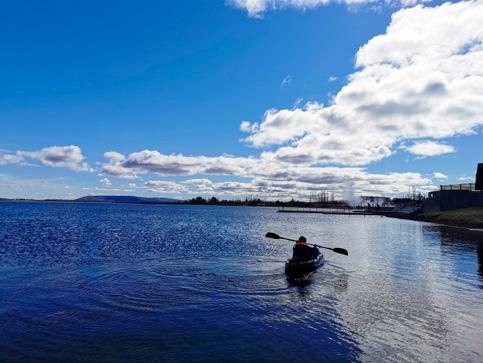
⦁ Þingvellir

⦁ Geysir

⦁ Gullfoss

Opening:
4th May until 30th September:
Open daily from 11:00 AM to 5:00 PM
Eldheimar in the Westmann Islands is devoted to the 1973 volcanic eruption and the process of rebuilding afterwards. The centrepiece of the exhibition is the house at Gerðisbraut 10 that was buried beneath the ashfall nearly fifty years ago and which has not been touched since. It provides a moving display of how this natural disaster affected people’s homes and Eldheimar
shows just how significant a threat the eruption was to the future habitation of the Westmann Islands.

Other significant volcanic activity is also part of the Eldheimar exhibition, including the Surtsey eruption that started in 1963 and lasted almost four years. Following the eruption, Surtsey was declared a protected

nature reserve, which gave the scientific community its first opportunity to observe how new life and a new ecosystem appear. Surtsey is on the UNESCO World Heritage List.
www.eldheimar.is


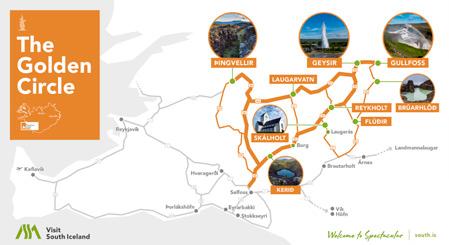

The region offers numerous interesting destinations to visit, natural wonders, historical sites and some little-known hidden gems. Everyone knows Thingvellir National Park, Gullfoss waterfall and Geysir hotspring area. Other popular places are Kerið volcanic crater, Lake Úlfljótsvatn, Brúarhlöð canyon, Haukadalur woods, Lake Laugarvatn and the historical site Skálholt.


The district offers a great many opportunities for outdoor experience and relaxation.

There is a wide range of activities for the whole family to enjoy: horse riding, fishing, bird watching, exploring caves, walking trails, river rafting and snowmobile trips. Petting zoo, paintballing, an adrenaline park, galleries, museums, golf courses and variety of nice warm swimming pools and geothermal baths.
Throughout the district are pleasant villages and communities to visit. Most of them started developing when geothermal activity was discovered in the area; Flúðir, Laugarvatn, Reykholt, Laugarás, Borg and Sólheimar eco-village. The villages offer a variety of services and are worth exploring to find interesting experiences and enjoy.
The area is rich of geothermal energy which is used to grow vegetables in greenhouses, to heat houses and pools. There is a long tradition for baking bread in the geothermal areas, using the steam or boiling water from the geysers. Numerous restaurants are to be found in the area many of which specialize in local food and ingredients and some offer special food experience. Farmers markets sell gourmet products direct from the farms. All types of accomodation is available so there should be something to suit everyone‘s needs. There is always something new and exciting to be found in this unique part of Iceland.
Gullfoss.every reason to stop at Skógar Museum when travelling around the country and to take in all the fascinating things to be seen there.
centuries in houses made from turf and stone.
Skógar Museum is one of the oldest museum in Iceland and altogether it has more than 18 thousand exhibits. There’s



The Folk Museum is the oldest part of the collection as a whole and it offers three floors of exhibition space. These include maritime, agriculture and natural history sections, including examples of weaving, ancient manuscripts and books, including a Guðbrandur Bible dating from 1584, as well as items dating back to the Viking age. In the Open Air Museum visitors can experience how Icelanders lived through the
The Technical Museum traces the evolution of transport and technology in Iceland through the 19th and 20th centuries. This covers the changeover from horses to motor vehicles, the development of Iceland’s telephone systems, the origins of electricity, the history of the postal services and much more. The Technical Museum also houses a souvenir shop and a café.
www.skogasafn.is











Reykjanes Peninsula is most often the beginning of a traveller’s Iceland adventure. As the Reykjanes coastline draws closer and the plane prepares to land at Keflavík Airport, the wrinkled lava, naked hills and mountains, yawning craters, spirals of geothermal steam and virtually treeless environment are probably an exciting contrast to memories of home.
Iceland is a nature paradise, and Reykjanes is a cross section of all that is Iceland. It is the first step into a wonderland, a region that beckons to be explored and enjoyed, that has its own geological drama, its own personality.




Reykjanes is your corridor into and out of Iceland, a place you must experience, a place where there is so much to experience.
Useful links
Tourist site for the area www.visitreykjanes.is
Grindavík tourist site www.visitgrindavik.is
Viking World www.vikingworld.is
Blue Lagoon www.bluelagoon.com
Official travel guide to Iceland www.visiticeland.com
Promote Iceland www.islandsstofa.is/en
www.visitreykjanes.is

The village of Grindavík is one of Iceland’s special surprises for tourists. While best known for its world famous Blue Lagoon, Grindavík also offers visitors diverse opportunities for recreation, leisure, and family fun.

For six months during the year 2021, there was a volcanic eruption in the mountain of Fagradalsfjall that made world news. A hike to the eruption site you will be able to see a brand new volcanic crater and freshly made lava up close - a lifetime experience for most people.

Grindavík has guesthouses, a state of the art camping facilities, one of Iceland’s top 18 hole golf course, and the unique Kvikan cultural centre with its exhibitions of marine resources and geothermal energy, as well as a variety of places to relax. There is an information centre for tourists and you will also find a surprising amount of good restaurants in Grindavík, for example Salthúsið, the Fish House and Hjá Höllu, just to name a few.
The area immediately around Grindavík offers countless opportunities for adventure and entertainment. Hike along historic trails such as Prestastastígur, Skógfellsvegur and Reykjavegur, or travel on an ATV, go horseback riding or tour by bicycle.
Visit the Hópsnes circle, with its shipwrecks and relics, and the Reykjanes lighthouse for a glimpse of life near the sea. Tour the fish processing facility in Stakkavík; fish in the harbor. Climb Þorbjarnarfell Mountain and enjoy a spectacular view of Grindavík and the surrounding area.
See natural gems such as Gunnuhver, Brimketill, Eldvörp, Kleifarvatn and Krísuvíkurberg.
The Reykjanes lighthouse is a sight well worth seeing, along with the colourful birdlife and activity around the harbour at Grindavík, which is also one of Iceland’s primary fishing ports.
Summer in Grindavik is full of activity. Sjóarinn síkáti; one of the biggest festivals in the nation, and the annual Midsummer´s Night Eve hike, Nature´s Week in Reykjanes.

Yes: Grindavík is a place with something for everybody!
www.visitgrindavik.is
N63° 52’ 5.558“ W22° 40’ 31.588“
The lava-scarred Reykjanes peninsula lies on one of the world’s major plate boundaries, the Mid Atlantic Ridge. According the continental drift theory the Eurasian and North American tectonic plates are continuously drifting apart with great forces under the gaping rifts. As the plates diverge,
linear fractures, known as fissures form due to stresses created by the tension that builds up as the plates move away from each other.
The Bridge between two continents at Sandvík is a small footbridge over a major fissure which provides clear evidence of the presence of a diverging plate margin. The
N63° 49’ 4.741“ W22° 35’ 56.075“
The folklore relates that the pond was regularly occupied by a giantess named Oddný. The viewing platform overlooking Brimketill is just a few steps away from the parking lot starting with a small set of stairs, making the platform inaccessible to wheelchairs. Standing on the platform you risk the possibility of getting soaked as the waves can almost reach the parking lot.
Make sure to watch your step while taking in the amazing view and the unrelenting forces of nature. Utmost caution is recommended, especially when travelling with children.
bridge was built as a symbol for the connection between Europe and North America. One can cross the continental divide on Leif the Lucky’s Bridge and take home a personalised certificate at Reykjanes Information Center as a confirmation and a reminder of this spectacular experience.

The viewing platform has now been extended and gives visitors a better view over Brimketill.
 The bridge was built as a symbol for the connection between Europe and North America.
The bridge was built as a symbol for the connection between Europe and North America.
The mountain Trölladyngja (Troll Mountain) is quite curious, only 275 meters high. Next to Trölladyngja is another mountain, Grænadyngja (Green Mountain) that is a bit
mountains are geothermally very active, and also very popular amongst hikers.
and beautiful colours. They are associated with various lava flows, including Afstapahraun close to the Keflavík International Airport main road.


If you’ve come to Iceland to indulge your passion for hiking, or simply want to stretch your legs somewhere scenic while you’re away, then you should check out our recommendations for the top five:
Skógfellavegur
This hiking trail is a coast to coast walk which links Vogar to Grindavik. The route is about 11 miles long and you can expect to cover the distance in around 4 to 6 hours.
Keilir
Keilir is a small cone-shaped hill which you might notice as you drive along route 41 between Keflavik and Reykjavik. You can pick up a gravelly trail which leads you up to the summit of this 378 metre high volcanic plug in two to three hours.
The hike to the volcano which erupted spectacularly throughout 2021 is still worth
doing, even though the lava flows have ceased. Two main routes skirt either side of the eruption zone, opening up a view of cooled, blackened lava cones stained yellow with sulphur deposits.
It is easy to hike from the village of Hafnir to the low-lying cliffs at nearby Hafnaberg. As you hike, keep an eye out for a plethora of
The far south west
Begin at Gunnuhver, a geothermal area of mud pools, from there head in the direction of Reykjanes Lighthouse, follow then a trail down to the shoreline where the Mid-Atlantic Ridge meets the mainland. Littered with boulders and sea stacks sculpted from lava, it’s a beautiful place to stop and watch the waves.
Visitors get the chance to try their hands on usical instruments and tio strut their stuff on stage. Here we see reggae group Hjálmar on stage – in their sculpted wooden incanation!
The Hljómahöllinn Hall of Sound in Reykjanesbæ is where the Icelandic Museum of Rock ‘n’ Roll can be found. As the name implies, it charts the story of Rock ’n’ Roll in Iceland from around 1930 to the present day. Exhibits are presented in photographs, texts, displays and on screen. Each visitor gets to explore the museum with a tablet computer and headphones, giving them the opportunity to dig deep into the history of Iceland’s popular music.

www.visitreykjanes.is

N64° 0’ 45.536“ W22° 18’ 18.318“
Iceland is known for its amazing landscape and the best way to experience the beauty of the country is by getting in touch with its nature from a close view.
Reykjanes Seakayak offers guided tours by seakayaks in the vibrant and safe environment in Reykjanes bay in the period from 1st
of May- 30th of September. Reykjanes
Seakayak is located between Keflavik and Reykjavik and the guided tours are done in a group of 2-8 persons for 2 hours, from Þórustadir, Vatnsleysuströnd to the Vogar lighthouse and back.
Bookings and further information on seakayak@seakayak.is

N63° 52’ 48.803“ W22° 27’ 1.451“
A visit to the Blue Lagoon is an important part of your stay in Iceland. Guests of the iconic destination renew their relationship with nature and soak up the scenic beauty—all while relaxing in the warm geothermal waters.


The lagoon’s unique abilities were first discovered in the early 1980s when local residents began to bathe in the warm blue reservoir that had formed in the lava field beside the Svartsengi Resource Park. Engineers at the facility had expected the water to seep through the lava and return to the earth’s volcanic aquifers. However, due to the water’s high silica concentration, proper drainage did not occur and a beautiful body of water took shape.
Those who were bathing in this newly formed lagoon started to notice an incredible improvement in their skin—especially those with skin conditions like psoriasis—which lead to the incorporation of Blue Lagoon Limited in 1992. The company‘s main focus was to study the water’s primary elements—silica, algae, and minerals—and in 1995, with research confirming the healing properties of geothermal seawater, Blue Lagoon Ltd. launched a renowned line of skin care. This was followed in 1999 by the opening of the modernday spa facility and, in 2005, a clinic hotel for the treatment of psoriasis. In 2012, the unique Blue Lagoon Water and its healing properties were recognized as one of the wonders of the world by National Geographic. Today, many decades after the first inquisitive souls began venturing into the water, the Blue Lagoon has blossomed from a humble curiosity into an extraordinary destination.
Guests of the Blue Lagoon not only have the opportunity to relax and unwind in the geothermal seawater, but they can also experience the in-water mask bar, the in-water bar, and signature spa treatments like the in-water massage and float therapy. After a day in the lagoon, guests can enjoy modern takes on Icelandic cuisine at Lava Restaurant while taking in the breathtaking views or visit Blue Café for a quick meal on the go. There is also a retail shop featuring three renowned, science-driven Blue Lagoon Skincare lines—BL+, Spa, and Derma—allowing guests to bring a piece of the Blue Lagoon home with them.
For those guests looking for a longer stay at Blue Lagoon Iceland, the destination offers two hotels—the intimate Silica Hotel and The Retreat, an award-winning luxury resort encompassing a 60-suite hotel, the subterranean Retreat Spa, and the Michelin-starred Moss Restaurant.
Experience the wonder. Welcome to Blue Lagoon Iceland.
www.bluelagoon.com

N63° 48’ 44.426“ W22° 43’ 0.770“
The strangely shaped cliffs and hardened volcanic ash layers at Valahnúkur were formed in an eruption in the early 1900s. The formations are named tuffs, and consist of volcanic glass, which is the result of 1200°C magma cooling rapidly. The first lighthouse in
The sculpture Rainbow in front of Keflavík Airport terminal’s northern facade, is by Icelandic artist Rúrí (born in 1951). Extending 24 metres into the sky, Rainbow is the tallest work of art in Iceland. It is made of square-shaped, stainless-steel tubes and stained glass. The rainbow’s colours are composed of 313 yellow, red, green and blue stained glass units.

The sculpture rises from a base of Icelandic dolerite rock and is lit up at night.
The artist has said of the piece: „The rainbow is an unfinished construction – I like to imagine that perhaps one day, in a hundred or a thousand years, somebody will pick up where I left off and continue the work. It will then climb skywards higher and higher before starting its descent, until at last touching the earth and thereby completing the rainbow.“
Iceland was built on Valahnúkur in Reykjanes in the year 1878 but later moved to another place not far a way.
Park at the base of the cliff and climb up for spectacular views of the coast and Eldley Island – it’s some 15km off shore and a popular habitat for cliff dwelling birds like guillemots, gannets and kittiwakes.


Reykjavík Capital Area must be on the must-do list of anyone looking for fun and adventure in a world of Spa wellness. It has most of the advantages of big-city life and virtually none of the disadvantages.





Comprised of six municipalities – Reykjavík, Hafnarfjörður, Kópavogur, Garðabær, Mosfellsbær and Seltjarnarnes – the Capital Area is the hub of the Icelandic nation. It is where about two-thirds of country’s population of 370,000 live and work, and exists in close harmony with pristine nature and renewable energy resources.

It is the biggest little metropolitan area in the world, a good-time environment with plenty of healthy oomph to spare – and share. It’s Pure Energy.
Public buses
Harpa Concert Hall
National Museum of Iceland
National Gallery of Iceland
Kópavogur Art Museum
Reykjavík Art Museum
www.bus.is
www.harpa.is
www.natmus.is
www.listasafn.is
www.gerdarsafn.is
www.artmuseum.is
Icelandic National Theatre www.leikhusid.is
Airwaves Festival
Reykjavík Arts Festival
www.airwaves.is
www.listahatid.is
www.visitreykjavik.is
Recharge in Hafnarfjörður. Exciting events, charming shops and boutiques, cozy cafés, friendly restaurants, and new adventures and activities at every step. Children swim for free in the swimming pools and free admission to the museums. Come for a visit!

The Parliament House (Alþingishúsið) is a classical 19th century structure which stands by Austurvöllur in central Reykjavík. It houses Alþingi, the Icelandic parliament. The building was designed by Danish architect Ferdinand Meldahl and built using hewn dolerite from 1880 to 1881.
Alþingishúsið has also housed the Icelandic National Library and Antiquaries Collection, and later the Icelandic National Gallery. The University of Iceland used the first floor of the house from 1911 to

One of the aspects of the Iceland that visitors find so enthralling is Iceland’s swimming pools, as few places around the world has pools of the quality that Iceland has to offer. Visitors love the fact that geothermal energy is used to heat both houses and the pools that are such a benefit to health. Visitors to the capital region can choose from no less than seventeen swimming pools, all heated using geothermal energy!
1940, and the President of Iceland had his offices in the building until 1973. Today, only the debating chamber, a few small meeting rooms and the offices of some of the senior parliamentary staff are actually located in Alþingishúsið. Committee meeting rooms, parliamentarians’ offices and most of Alþingi’s secretariat are located in other buildings in the area around Austurvöllur. A new building to house


Hafnarfjörður Museum features the cultural history of the town of Hafnarfjörður through artefacts, photographs, and stories of the town. Hafnarfjörður Museum consists of six houses, and nine year-round exhibitions shedding light on the history and culture of the area. Hafnarfjörður Museum aims to showcase the ever-changing lives of the folks in this seaside town.
usually three exhibitions running concurrently: a permanent exhibition on the history of Hafnarfjörður, an exhibition of toys, and a short-term exhibition on a chosen theme.


A variety of beautiful jewelry

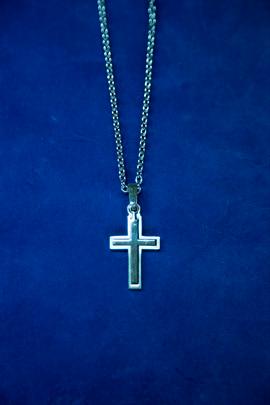



The Bright Days cultural festival takes place in Hafnarfjörður in June. A variety of events take place around the town, setting out to entertain locals and visitors to Hafnarfjörður, reflecting the town’s highly varied cultural life. The festival lasts all summer.
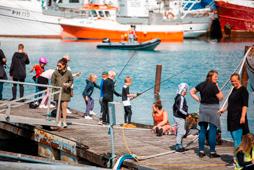
Hafnarfjörður is a town that has everything when it comes to entertainment, shopping and services. It has a natural beauty of its own and this is a popular destination for both local and overseas visitors. Hafnarfjörður is a growing community that welcomes diversity and innovation. This has brought in specialist shops, artisan bakers, studios, galleries and small retail outlets with Icelandic produce straight from the farm to set up around Hafnarfjörður.
This is a place that’s always worth a visit, with its varied shops and services, welcoming restaurants, cosy coffee houses, homely hotels, galleries and studios that are home to Icelandic art and design, museums and the unique natural environment within walking distance.
The town has its unique warm atmosphere, the people are friendly and there are opportunities to relax for every age group. There are three swimming pools in Hafnarfjörður, each with its own unique charm. Swimming pools are free for anyone of 17 and younger.
The centre of Hafnarfjörður buzzes with life


and the harbour area is particularly enchanting, with its ships and boats, and people fishing everywhere. The community’s long history is to be seen in the surroundings, and to get to know it better, take a look at Strandstígur and the town’s free museums. The Hafnarfjörður museum is a great place to start, as well as Hafnarborg and the library, and the museum’s five buildings are open over the summer. On a bright summer’s day it’s always worthwhile to take a good book, a snack a blanket, cards or anything you like, and stroll up to
Hellisgerði, the lava-studded park at the heart of Hafnarfjörður.

Upper Hafnarfjörður has hidden experiences at every step. A turn around Hvaleyrarvatn is a pleasant walk, and the lake is perfect for paddling and watersports. You can’t go wrong with a visit to Krýsuvík, offering a colourful experience for the whole family. Helgafell is a popular destination for walkers, the wildlife and bird life of Ástjörn is simply fascinating and a guided tour through Leiðarendi lava tube reveals a wealth of knowledge about Icelandic history, geology and folklore. The town’s camping ground is at Víðistaðatún, which is an outdoor paradise in its own right, with climbing frames, inflatable jump pads, castles, a grill area, outdoor art installations and a nine-hole frisbee golf course.
Come home to Hafnarfjörður to experience a whole summer of bright days!
visithafnarfjordur.is



Gullkistan at Frakkastígur 10 in Reykjavík is a goldsmith’s shop that offers a wide variety of silverware for Icelandic national dress. Goldsmith Dóra Guðbjört Jónsdóttir now runs Gullkistan after studying her trade in Sweden and Germany

‘Gullkistan has a variety of national dress silver, much of which is made to old patterns that have been part of the workshops that has been here since 1870. We still use these old patterns, but the original moulds are now kept at the Árbær museum,’ she said.
‘National dress silverware comes in many different varieties and customers can have their items made to old patterns and we also offer a variety of items worked in silver wire. If people have heirloom jewellery, we can repair, clean and gild it as required,’ she added.
www.thjodbuningasilfur.is
Opening hours: Monday to Friday: 13:00-16:00
The exhibition Fish & folk – 150 years of fisheries at the Reykjavík Maritime Museum at Grandagarður 18 is about the history of the Icelandic fisheries, from the time when rowing boats gave way to large fishing vessels in the late 19th century, through to the 21st century. This rich history is told from the perspective of Iceland’s biggest fishing port, Reykjavík. The Maritime Museum’s setting is an appropriate one, as the building once housed a flourishing fish factory.
The value of fish to the Icelandic nation cannot be overstated. Over the centuries fish has been a staple of the Icelandic diet, and one of the nation’s most important exports. The fish is followed from the ocean, into the net, on board the boat, onto dry land and to its final destination – the plate.

Open daily 10:00-17:00.
www.reykjavikcitymuseum.is


Gljúfrasteinn-Laxness museum in the valley of Mosfellsdalur is only 20 minutes away from Reykjavik on the way to Thingvellir
national park. Gljúfrasteinn was the home and workplace of Halldór Laxness, winner of the Nobel Prize for Literature in 1955 and his
family for more than half a century. It is open to the public as a museum, unchanged from when Laxness lived there.
Halldór Laxness (1902-1998) stands head and shoulders above the other Icelandic writers of the 20th century and his books have been translated into 43 languages and published in more than 500 editions. His first book Barn náttúrunnar was published 1919 when Laxness was only 17 years old.
Tours of the house are available in Icelandic, English, German, Swedish and Danish, and an illustrated guide in French. For further information or booking of tours tel: 586 8066 or e-mail: gljufrasteinn@gljufrasteinn.is
www.gljufrasteinn.is
Reykjavik Pride is an important event for the LGBTQ community in Iceland. The festival promotes visibility and courage and provides people with a platform to manifest their pride. The celebrations do not only mark a successful stage in the LGBTQ struggle; Reykjavik Pride is also one of the most vibrant and popular events on Reykjavík’s cultural calendar. By participating in the event in such large numbers, the Icelandic people regularly show valuable support, recognition and respect for the cause.
www.hinsegindagar.is/en
This colourful event brings tens of thousands of people into the city centre every year to show solidarity and to have fun with the LGBTQ community in Reykjavik.

People of all genders, friends, relatives, and a fast-growing number of tourists, all come together to celebrate and support universal human rights.

The Sun Voyager (Icelandic: Sólfar) is a sculpture by Jón Gunnar Árnason, located next to the Sæbraut road in Reykjavík, not far away from Harpa conserthouse. Sun Voyager is described as a dreamboat, or an ode to the Sun. The artist intended it to convey the promise of undiscovered territory, a dream of hope, progress and freedom.
Standing by the sculpture during sunset, at any time of the year, is an unforgettable moment. The epic view of Mountain Esja and Faxaflói bay makes this a favorite romantic destination for travelers and all of those who appreciate the beauty of nature. It is also a wonderful spot for photo opportunities whether enjoying a midday stroll or taking in the full significance of the artwork’s name during the summer’s Midnight Sun in Reykjavik.

The Nordic House in Reykjavík is a cultural institution opened in 1968, designed by the world famous arcitect Alvar Alto. Its goal is to foster and support cultural connections between Iceland and the other Nordic countries. To this end, the Nordic House organizes a diverse program of cultural events and exhibitions.
The house is the venue for front row activities in the Icelandic cultural calendar: Reykjavík International Film and Literary Festivals, Iceland Airwaves and The Nordic Fashion Biennale—launched by the Nordic House. In the basement of the building, you can find the exhibition space Hvelfing which exhibits contemporary art by artists from all over the Nordic.
Opening Hours:
Tue - Sun: 10.00am - 5.00pm
www.nordichouse.is



With great selection of restaurants, accomondation and leisure activities, Grindavík welcomes you!